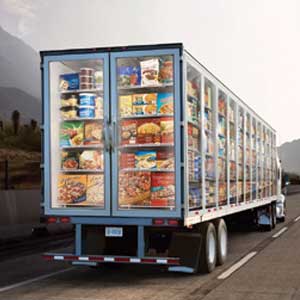THANK YOU FOR SUBSCRIBING

Navigating The Cold Chain: Insights From Two Decades In Supply Chain Management
Lenny S. Budiman, Head Of Supply Chain Management, Pt. Sarimelati Kencana Tbk.

Being a female enthusiast in the supply chain landscape for almost two decades, there has never been one day that I have not found something new in this interesting subject.
As my experience evolves, the “niche” subject of supply chain that intrigues me the most is the cold chain.
So, what is a cold chain? A cold chain is a set of procedures by which some products need to be monitored and handled within a certain range of temperatures, which needs to be maintained in order to ensure that the product quality remains intact.
Cold chain is usually for products with a shorter shelf life if not frozen or products that need certain temperatures and conditions to stay “alive” and do not impact the product's effectiveness.
In the food and beverage industry, maintaining cold chain products (usually frozen or chilled state) needs the temperature to be always below zero degrees, and, in some cases, chilled conditions need to be maintained at 15 to 25 degrees. This is crucial to ensure the quality and safety of perishable products.
Pharmaceutical products, such as vaccines and oncology drugs, are sensitive to temperature spikes and need to be monitored 24 hours a day. Even a slight temperature change can affect the product's efficacy .
Cold chain operations need to handle challenging, delicate, and sensitive products. It is so unique that the cold chain itself “can’t be generalized of Standard Operating”. It all depends on the geographical terrain, the transportation mode used for distribution, the area covered, how many seasons and all the small things that need to be covered. So, in the cold chain, each standard should be determined based on where you are and, which working instruction fits your condition of surroundings and the nature of the product itself.
Pharmaceutical products, such as vaccines and oncology drugs, are sensitive to temperature spikes and must be monitored 24 hours a day. even a slight temperature change can affect the product's efficacy
For these points, a logistic provider would need a lot of installation equipment, advanced temperature monitoring, specialized packaging, robust infrastructure, efficient transportation, compliance with regulations, risk management, and continuance of expertise training. And because of the need for huge investments, the cold chain player here in Indonesia is very small compared to traditional logistics.
Significant growth is occurring in the food and beverage and oncology pharmaceutical industries, underscoring the urgent need for a logistics provider that can effectively manage the cold chain.












